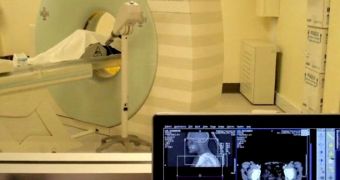According to the conclusions on a new scientific study, it would appear that children are exposed to too high amounts of radiation during three-dimensional X-ray investigations. Orthodontists prefer the 3D version of the imaging method over its 2D counterpart, even if it exposes the kids to more radiation.
Exposing young children to unnecessary levels of radiation should be avoided at all costs, public healthcare experts say. Therefore, 3D X-ray imaging should be the exception in doctors' usual recommendations, rather than the norm.
The new research, conducted by the University of Michigan faculty, advises that simple orthodontic cases should be investigated using traditional 2D X-ray imaging, instead of its 3D counterpart.
At this time, orthodontic diagnosis and treatment planning is conducted through a variety of methods, the pros and cons of which are the object of ongoing debates in the international community.
One of these discussions revolves around if and when cone beam computed tomography (CBCT) should be used on patients in general, and children in particular. A conclusion to these talks is, however, some distance away, analysts say.
According to the new study, the number of orthodontists that use 3D X-ray imaging techniques commonly for even the most basic procedures is quite small. Still, that doesn't change the fact that children attended by these doctors are exposed to large doses of radiations unnecessarily.
The new study suggests that, for most common cases, 2D imaging is enough, says expert Dr Sunil Kapila. He is the chair of the Department of Orthodontics and Pediatric Dentistry at the UM School of Dentistry, and also the lead author of the new study.
“Most of the patients who need orthodontic treatment are young adults and pediatric patients,” Dr. Erika Benavides explains. She specialized in reading CBCT scans at the UM School of Dentistry.
The expert also holds an appointment as a clinical assistant professor in the UM Department of Periodontics and Oral Medicine, Science Blog reports.
“Keeping in mind that the radiation received has cumulative effects, adding unnecessary radiation exposure to the patient may result in a higher biological risks, particularly in the more susceptible young children,” she says.
“This is why selecting the patients that would benefit the most from this additional exposure needs to be done on a case-by-case basis,” the expert concludes.

 14 DAY TRIAL //
14 DAY TRIAL //